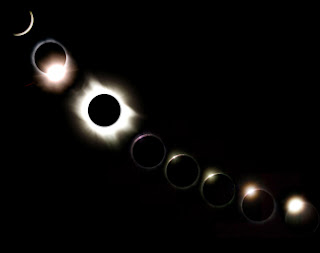 |
| Image Source: Astronomy Magazine |
Topics: Astronomy, Eclipse, Heliophysics
In addition to my youngest son's 24th birthday this Sunday, Astronomy gives a guide to a total eclipse that will be seen clearly in Kentucky next year when he turns 25 (and his insurance rates drop like a STONE). Tomorrow, it's an "almost Eclipse" according to Time and Date. Next year it will be the first total eclipse in 38 years. Since we're in different states, it's quite a coincidence to coincide with his birthday. I hope we both get to see it.
From "25 facts you should know about the August 21, 2017, total solar eclipse" (you can get to it at the link below):
1. This will be the first total solar eclipse in the continental U.S. in 38 years. The last one occurred February 26, 1979. Unfortunately, not many people saw it because it clipped just five states in the Northwest and the weather for the most part was bleak. Before that one, you have to go back to March 7, 1970.
2. A solar eclipse is a lineup of the Sun, the Moon, and Earth. The Moon, directly between the Sun and Earth, casts a shadow on our planet. If you’re in the dark part of that shadow (the umbra), you’ll see a total eclipse. If you’re in the light part (the penumbra), you’ll see a partial eclipse.
3. A solar eclipse happens at New Moon. The Moon has to be between the Sun and Earth for a solar eclipse to occur. The only lunar phase when that happens is New Moon.
Astronomy: Prepare for Totality - August 21, 2017
Comments